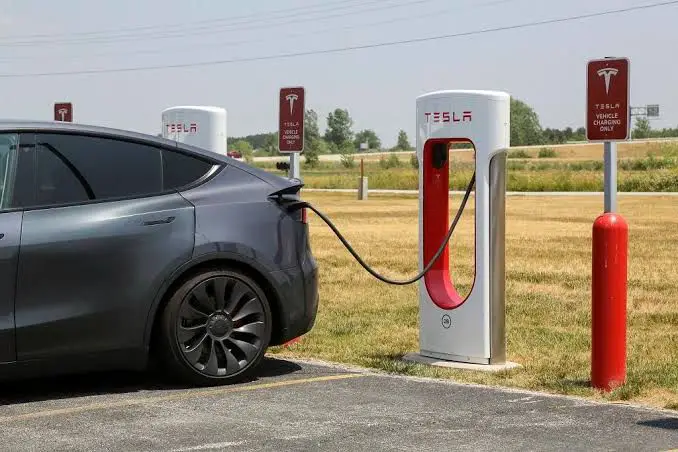Electric vehicles (EVs) are no longer the future—they’re the present. With advancements in battery technology, widespread charging infrastructure, and federal incentives, 2024 marks a significant year for electric cars. This article dives into the key trends shaping the EV landscape, including government tax credits, battery improvements, and how to find charging stations near you.
Table of Contents

EV Tax Credits and Government Incentives
The U.S. government has been a driving force behind the adoption of electric vehicles, offering federal tax credits to encourage consumers to make the switch. In 2024, these tax incentives remain a significant factor in reducing the cost of EV ownership. Buyers can receive up to $7,500 in federal tax credits for eligible vehicles.
Key points To Remember
- The federal tax credit applies to new and some used electric vehicles.
- State-level incentives vary, so check your state’s specific policies. For example, California offers rebates that can stack with federal credits.
If you’re considering purchasing an electric vehicle, look into the specific models that qualify for these credits. EV tax credits can make a substantial difference in the overall cost of ownership.
The Evolution of Electric Vehicle Battery Technology
One of the biggest concerns among prospective EV buyers is battery life. In 2024, EV battery technology has made considerable strides, with many new models offering ranges that easily exceed 300 miles on a single charge. Leading automakers like Tesla, Ford, and Rivian have been working on solid-state batteries, which are expected to revolutionize the industry with faster charging times and increased energy efficiency.
Recent Innovations in Battery Technology:
- Solid-state batteries promise to reduce charging times by up to 50%.
- Tesla’s new 4680 battery cells offer higher energy density and longer life cycles.
- Battery recycling technology is also improving, which helps reduce environmental impact.
Keyword Tip: If you’re researching EVs, popular search terms include “EV battery life comparison,” “solid-state batteries,” and “Tesla 4680 battery.”
How to Find EV Charging Stations Near You
One of the most common concerns about switching to an electric vehicle is the availability of charging stations. Fortunately, in 2024, the U.S. boasts a rapidly growing network of more than 140,000 public charging stations. Many of these are fast chargers, which can recharge a vehicle in less than 30 minutes. Apps like PlugShare and ChargePoint make finding nearby chargers easier than ever.
Types of EV Chargers:
- Level 1: Basic home charging (120V). Good for overnight charging.
- Level 2: Standard public charging stations (240V). These chargers are found in many public areas like parking lots and shopping malls.
- Level 3/DC Fast Charging: High-speed charging that can charge an EV to 80% in as little as 20 minutes. These are commonly found along highways for long-distance travel.
Search Tip: Use keywords like “EV charging stations near me,” “fastest EV chargers,” and “install home EV charger” to find relevant information about charging solutions.
Comparing EV Models: Tesla, Ford, Rivian, and More
The 2024 lineup of electric vehicles features exciting options from established brands and newcomers alike. Tesla continues to dominate with its Model 3 and Model Y, while Ford’s Mustang Mach-E and the Rivian R1T are gaining traction for their range and performance.
Here’s a quick comparison of some top models
- Tesla Model 3: Starting at $40,000, with a range of 358 miles.
- Ford Mustang Mach-E: Starting at $43,000, with a range of 312 miles.
- Rivian R1T: Starting at $73,000, with a range of 314 miles and off-road capabilities.
Each of these models qualifies for federal tax credits, making them more affordable. When shopping for an EV, consider factors like range, charging speed, and total cost of ownership.
Keywords for Comparison Searches: “Tesla Model 3 review,” “Ford Mustang Mach-E vs Rivian R1T,” and “best electric cars 2024.”
Environmental Impact of Electric Vehicles
One of the biggest selling points of electric vehicles is their environmental benefits. EVs produce zero tailpipe emissions, making them an essential component in reducing carbon footprints. Additionally, as renewable energy sources like wind and solar become more prevalent, the electricity used to charge EVs will become greener.
Environmental Benefits:
- EVs reduce greenhouse gas emissions by up to 50% compared to traditional gasoline cars.
- Lower lifetime maintenance and operational costs due to fewer moving parts.
- Companies like Tesla and Ford are focusing on sustainable manufacturing processes, such as using recycled materials in vehicle production.
For eco-conscious consumers, switching to an EV is a tangible way to contribute to a more sustainable future.
Keyword Tip: Common search terms include “EV carbon footprint,” “electric cars and the environment,” and “are EVs really green?”
Conclusion
Electric vehicles are poised to dominate the automotive industry in 2024. With increasing government incentives, advancements in battery technology, and a growing charging network, there has never been a better time to make the switch. Whether you’re interested in reducing your carbon footprint, saving on fuel costs, or simply enjoying cutting-edge technology, EVs offer a future-proof solution.
